Responsive Architecture
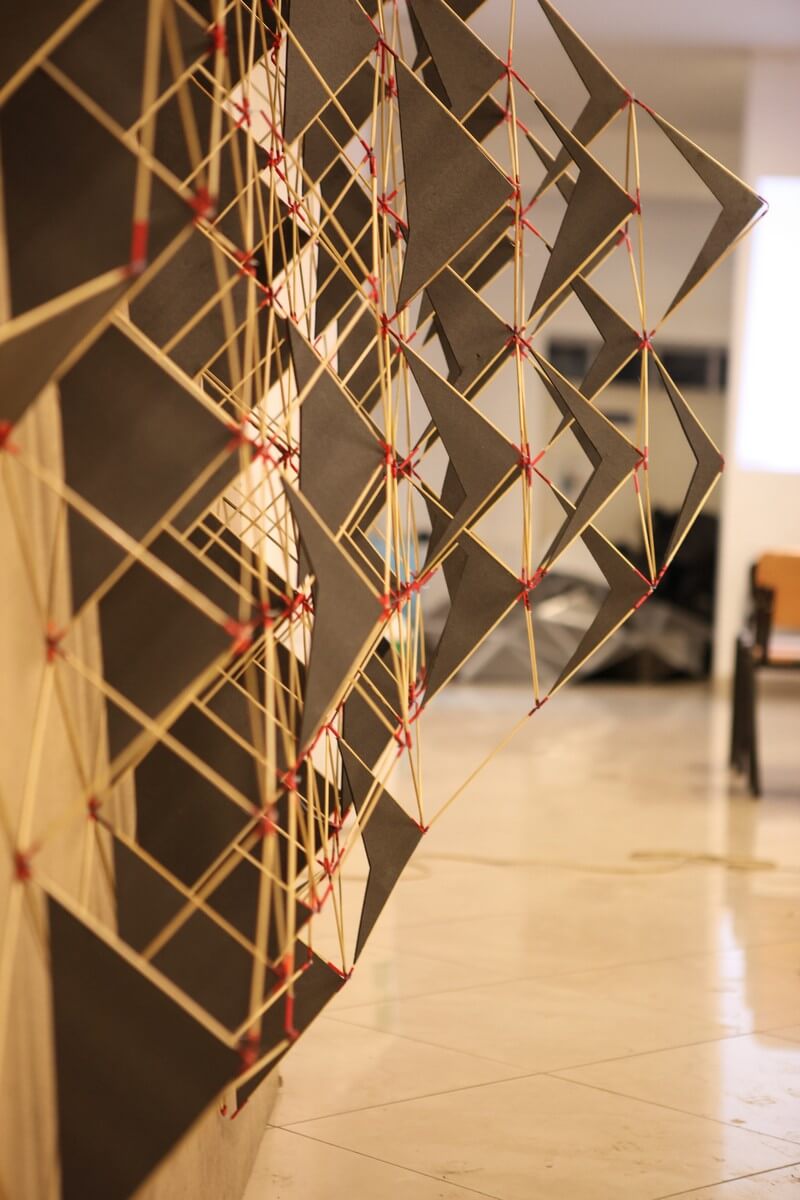 The Innovative Prototyping @ Dynamic Fields – Responsive Architecture Workshop, which took place in Bucharest, Romania July 16-29, resulted in five innovative prototypes. The workshop was benefited by the presence of Patrik Schumacher, Director of Zaha Hadid Architects, founder of AA Design Research Lab London and one of the most important figures in the world of computational design.
The Innovative Prototyping @ Dynamic Fields – Responsive Architecture Workshop, which took place in Bucharest, Romania July 16-29, resulted in five innovative prototypes. The workshop was benefited by the presence of Patrik Schumacher, Director of Zaha Hadid Architects, founder of AA Design Research Lab London and one of the most important figures in the world of computational design.
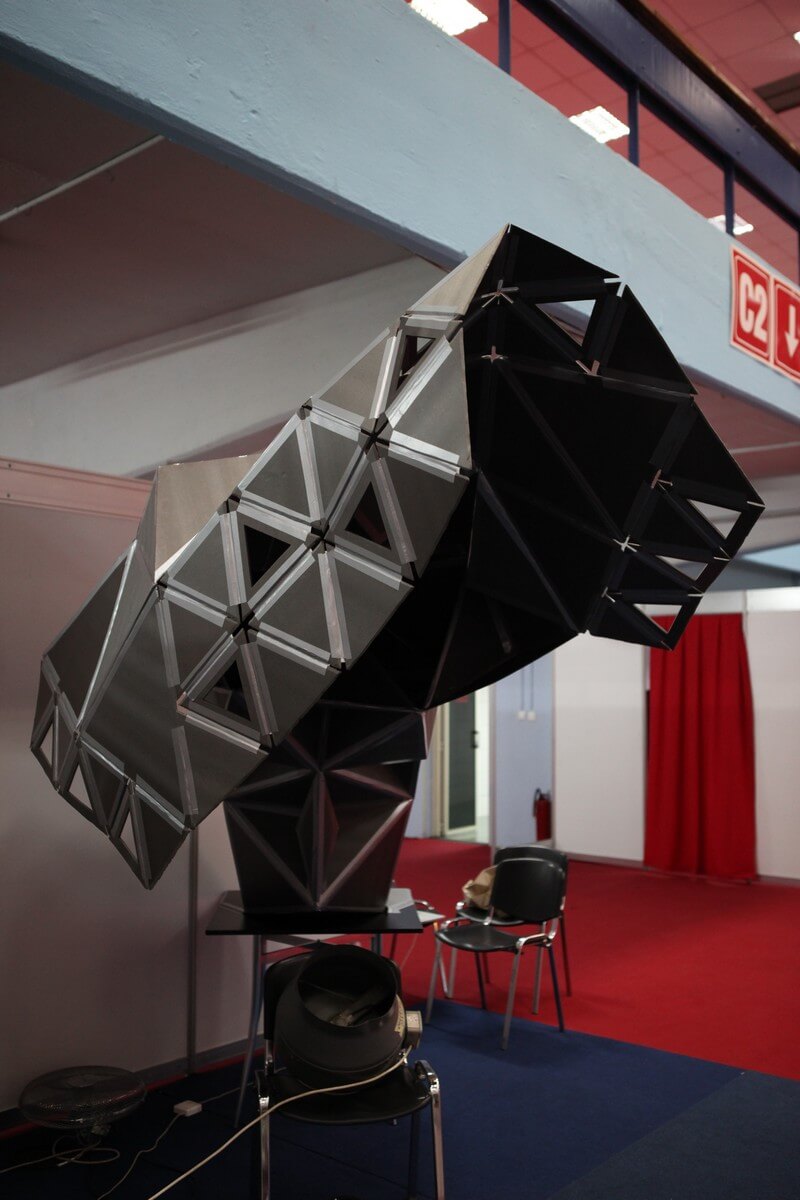
The workshop’s purpose was the understanding of how the advancement of digital technology is helping architects respond to the complexity of the environment surrounding them. The five prototypes (Turbillon, Interactive Field, Dynamic Muqarnas, Project 86 and Wind Mapper) were to be exposed at different fairs or events.
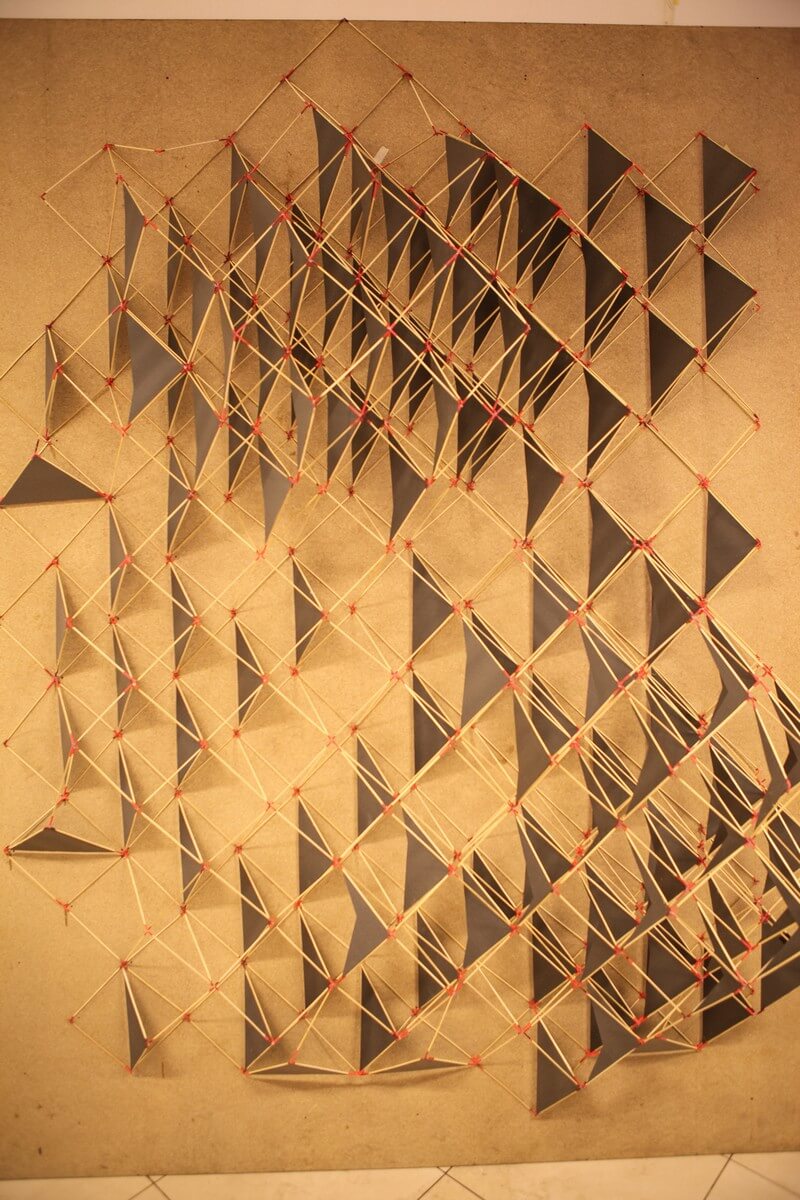
1. Project 86: A dynamic structure formed of diamond shaped modules having flexible joints which allow the interconnected parts to react at an individual level or as an integrative system. The final project was the result of an intensive testing of various iterations. The idea was to create a structure having moving parts and allowing it to constantly adapt and change to its surrounding environment and in particular, to the airflow created by the industrial fans strategically placed to create a pleasant movement.
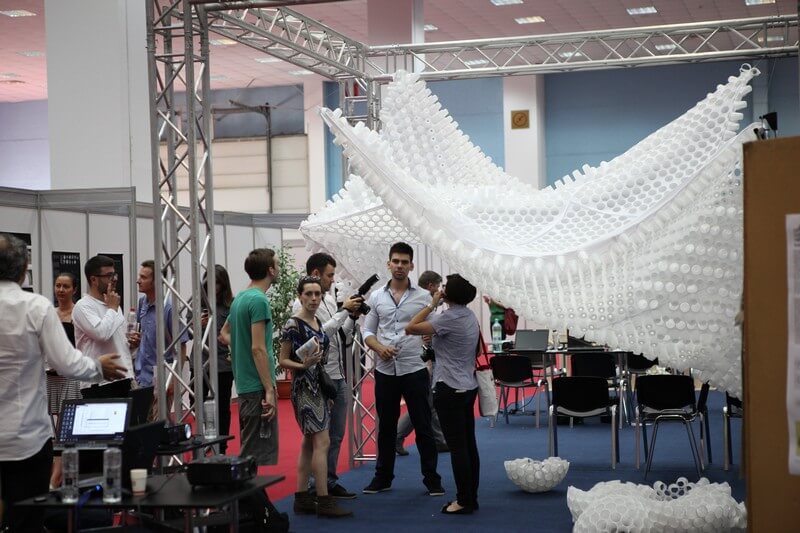
2. Interactive Field: After several days of test-trials with different materials under a constant (vortex) flow of a fan, the cup became the perfect unit to test, due to its lightness and versatility (shape, texture, price, availability). The project goal was to find a pattern and to explore material properties in order to generate specific sub-wind fields. Dividing the wind fields system in sub-systems. Trying the cups together with a flexible material generates a moldable field that works with the fan and adapts to its conditions constantly. It directs the wind in small fields still, while changing its shape according the environment.
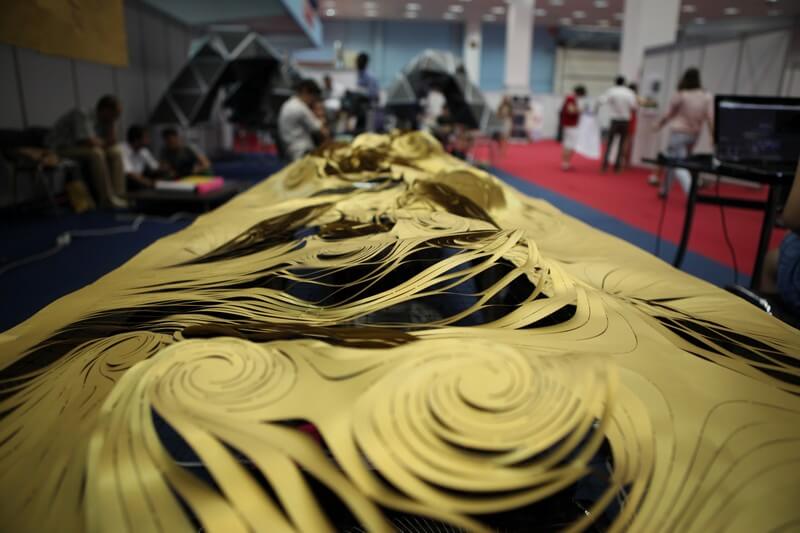
3. Tourbillon: The challenge was finding a simple and effective operation that would alter static behaviors into performant ones. The base material of this study is paper. Using the childhood experience in the art of Kirigami, the participants discovered how cuts and folds can modify the behavior of a paper sheet from a simple plane into a responsive three dimensional surface. The ‘fold and cut system’ was replaced by digital design and automated manufacturing.
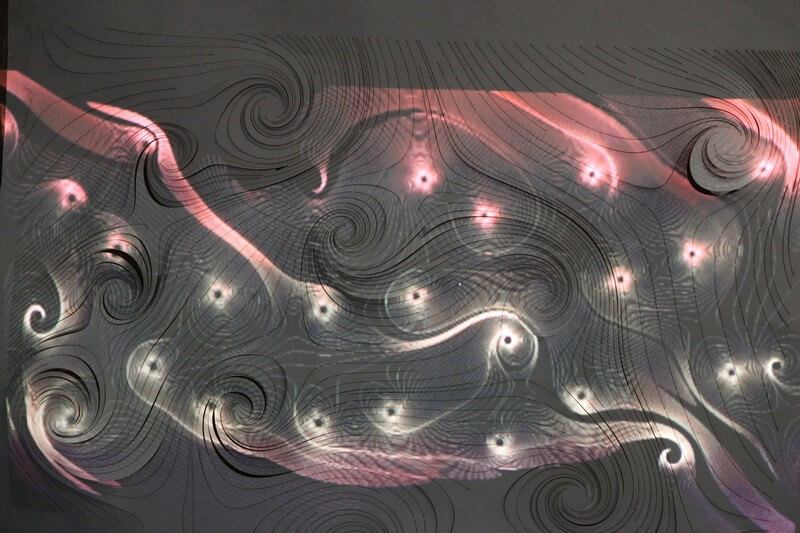
The project goal was to obtain a geometry control landscape through cutting and surface optimization with an expected performance in a dynamic field and to transform a planar surface in 3D landscape under the force of wind making a volume from a plane.
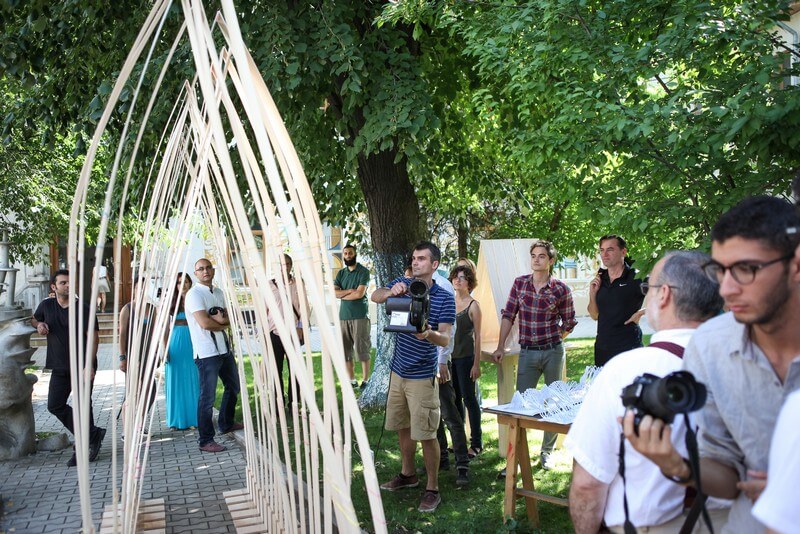
4. Wind Mapper 1.0: The goal of this project was to understand how complexity is generated based on the physical interaction of a simple geometry with a dynamic field. The participants called it “simplexity”. The chosen structure is flexible modulated elastic one made out of balsa wood. The simple geometry based on a triangle module generates complexity through the elastic behavior of the whole system in the interaction process.
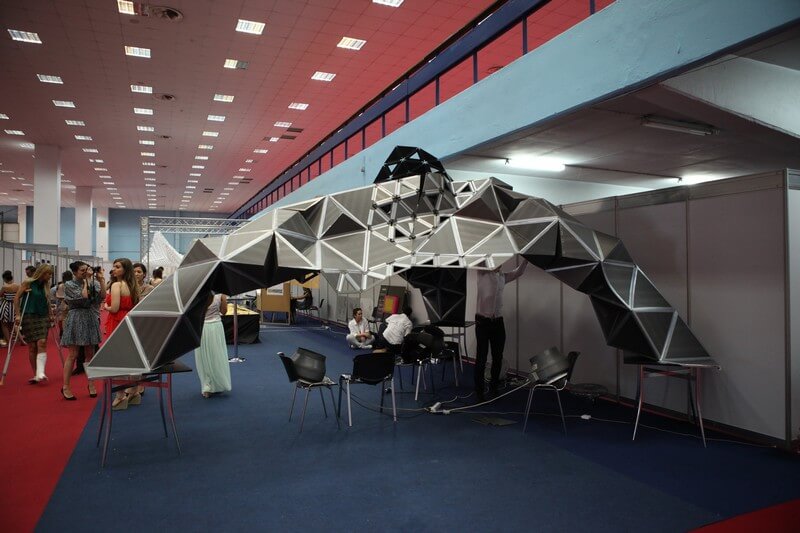
5. Dynamic Muqarnas: Inspired by the reminiscent of the stalactites and the muqarnas, the Dynamic Muqarnas project is reconstructing and rethinking the traditional elements and materials into a flexible and performing structure. Muqarnas display radial symmetry based upon N-gonal symmetry. The number of unique tiles possible is derived from N = N/2 – 1. Larger N values result in thinner muqarnas tiles. There are an unlimited number of muqarnas tile sets given the wide variety of tile profile design possibilities.
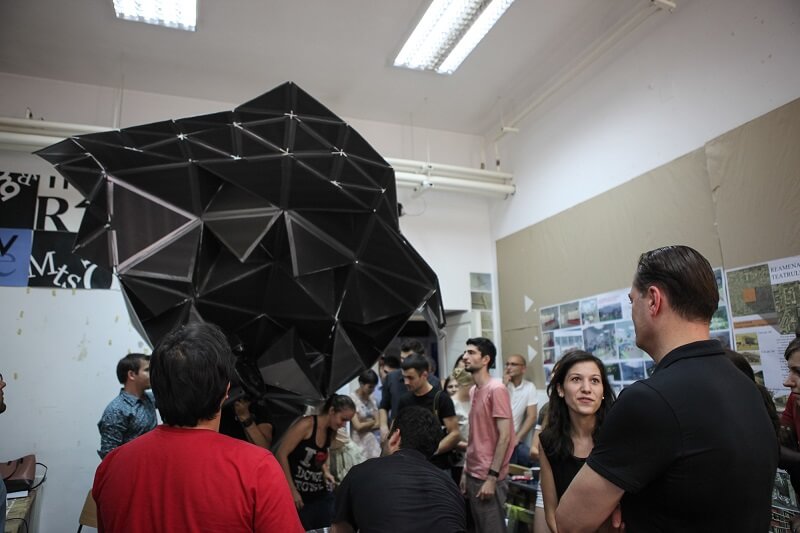




























Comments